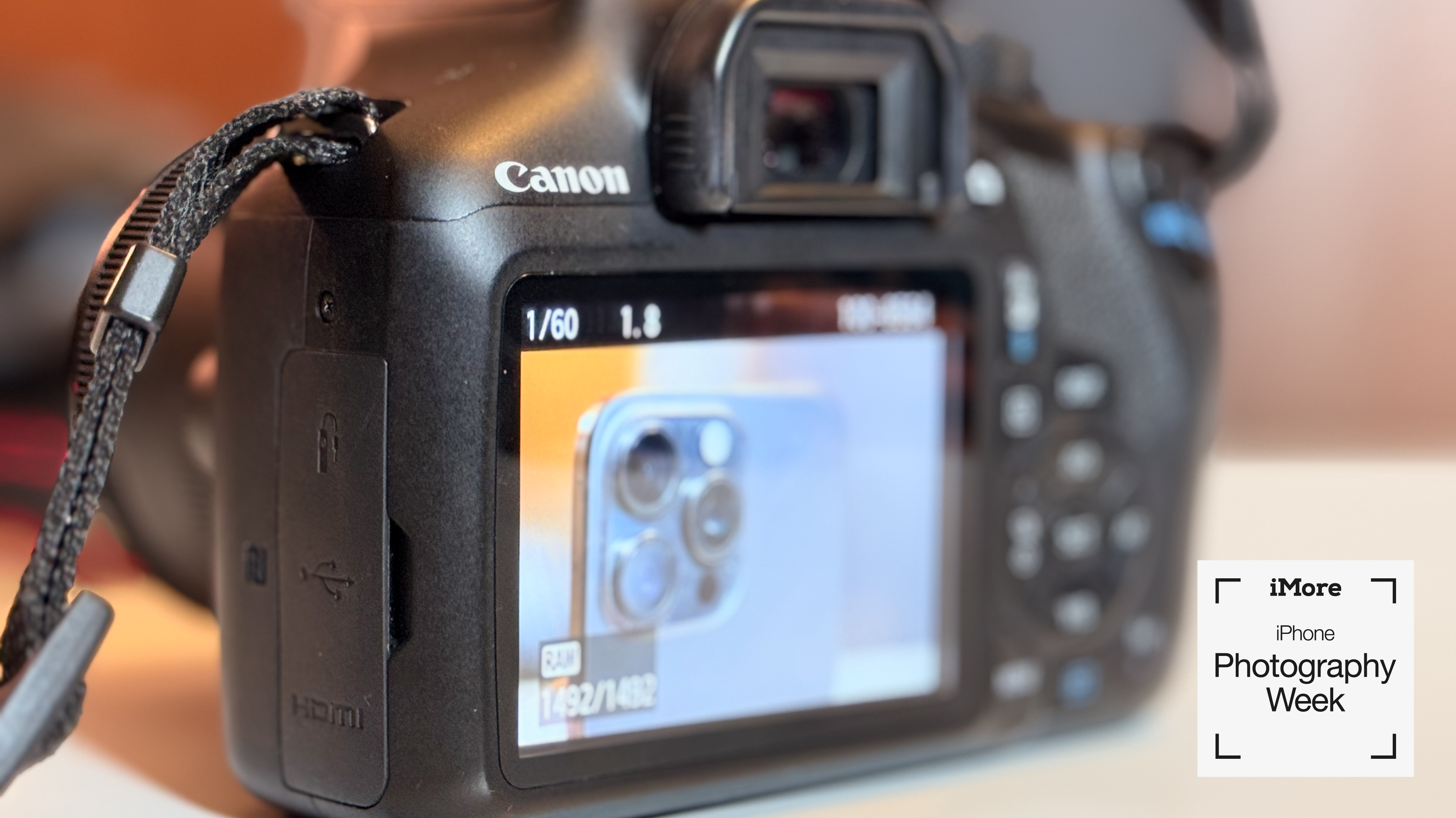
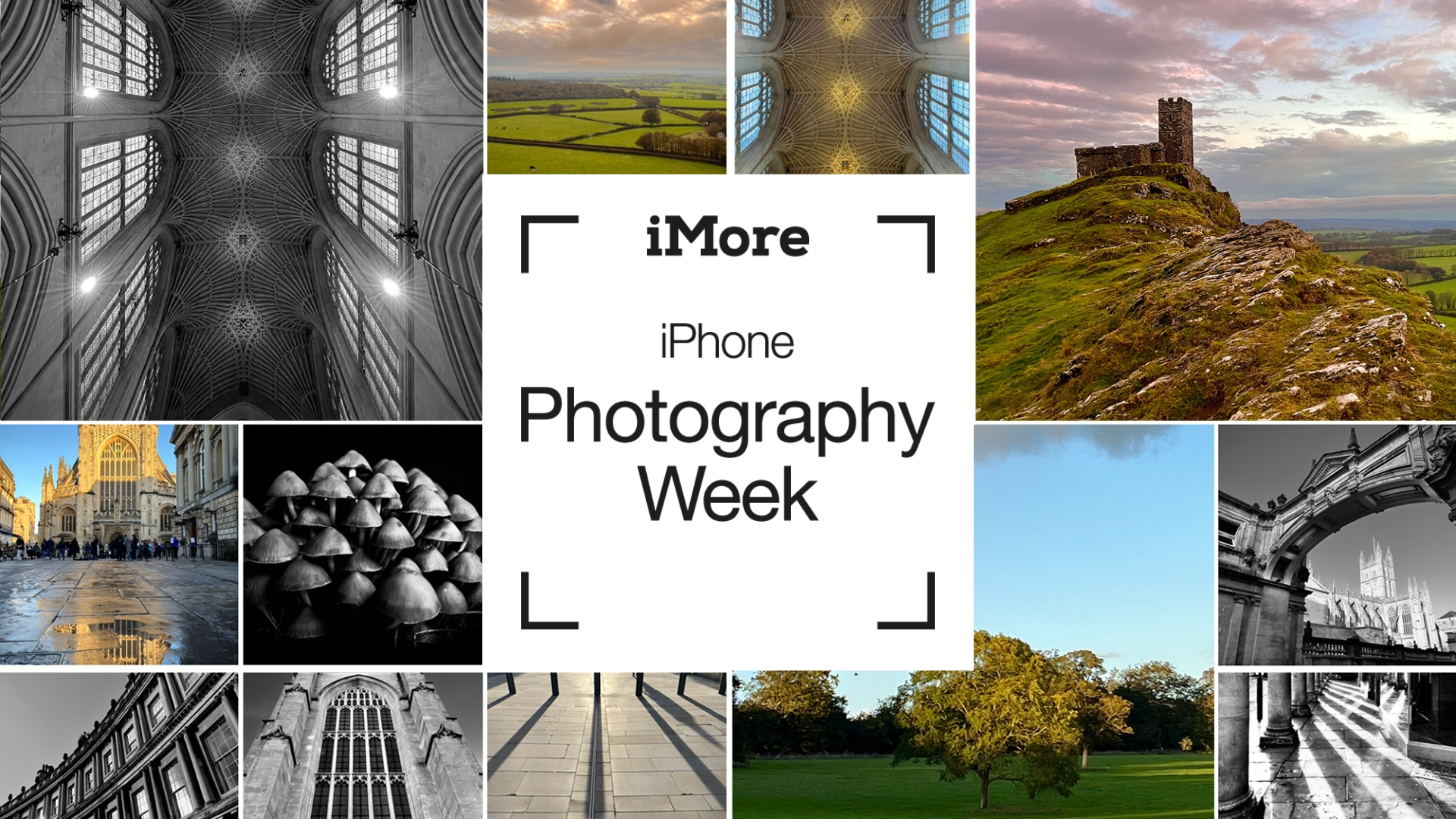
Take better photos with the camera in your pocket. iMore's iPhone Photography Week 2024 is filled with great content that will take your iPhone camera-snapping ability to the next level.
- Check out more iPhone Photography Week 2024
#iMorePhotographyWeek
I’ve owned an iPhone since 2011, and its iconic onboard camera has become a staple of everyday life. These days, without thinking, I pull out my iPhone camera at every opportunity to take snaps of food, memories, scenery, and anything else you can imagine. A few years ago, however, I got my hands on a DSLR camera, and since then my iPhone camera experience has left a bit to be desired.
In my two years using various iPhones and my $500-ish Canon EOS 1300D DSLR (aka the REBEL T6), I’ve always preferred the images I could take on my actual camera compared to my iPhone shots. Most notably, I’ve stopped using an iPhone altogether to take pictures of products and hardware for work. For pleasure, the DSLR is a staple for trips that might involve the chance to take some good photos.
The problem is, I know so little about photography (or rather the jargon behind it all) that I can’t explain why I prefer one to the other. It’s a bit like faces, art, or music. It’s quite obvious which ones you enjoy more, but explaining the difference between the two is often difficult, if not impossible. So, for iPhone Photography Week on iMore, I brought in an expert. I took some comparative shots on my iPhone 15 Pro Max and my Canon DSLR to see what exactly is the difference between an iPhone and a DSLR camera. Are there obvious differences? Is one noticeably better than the other? I’ve assembled seven comparison shots and hired N-Photo: The Nikon Magazine’s Deputy Editor, Mike Harris, to give me his blind thoughts on each set of images. Mike knows his exposure from his contrast, and his POV from his FOV, so what can we glean from these images? If anything at all?
A caveat: It’s impossible to do a like-for-like shoot with an iPhone and a DSLR for a number of reasons. Naturally, any bonkers professional camera that costs $1,000+ is going to obliterate the iPhone in most scenarios. Our much more modest DSLR certainly (in my view) gave the iPhone a run for its money during this test, and in the studio, I’d still prefer it. But this has still turned out to be an extremely interesting test with some very intriguing results, including some you might not expect.
All of the DSLR shots were taken with a 50mm f/1.8 lens, which is one of the most popular lenses in the Canon arsenal and also one of the cheapest. It’s perfect for portraits and lowlight, but probably not the lens you’d want for landscapes or wide shots. Our iPhone shots were all taken on an iPhone 15 Pro Max in either 12MP or 24MP format. Using the 48MP ProRAW format seemed like it would put the 18MP DSLR at too much of a disadvantage to make the test worthwhile. However, take it from Mike, megapixels aren’t everything when it comes to photography.
So, to business. We presented Mike with seven pairs of images taken on iPhone and DSLR. As noted, it's very hard to do a like for like test between iPhone and a dedicated camera, but we've done enough that Mike has drawn out a wealth of information for us to peruse. Who knows, this might even convince you to upgrade to Apple's best iPhone, or grab a DSLR camera for yourself.
Circus lane
iPhone - 24mm f.178 (x2, 12MP)

DSLR 18MP RAW
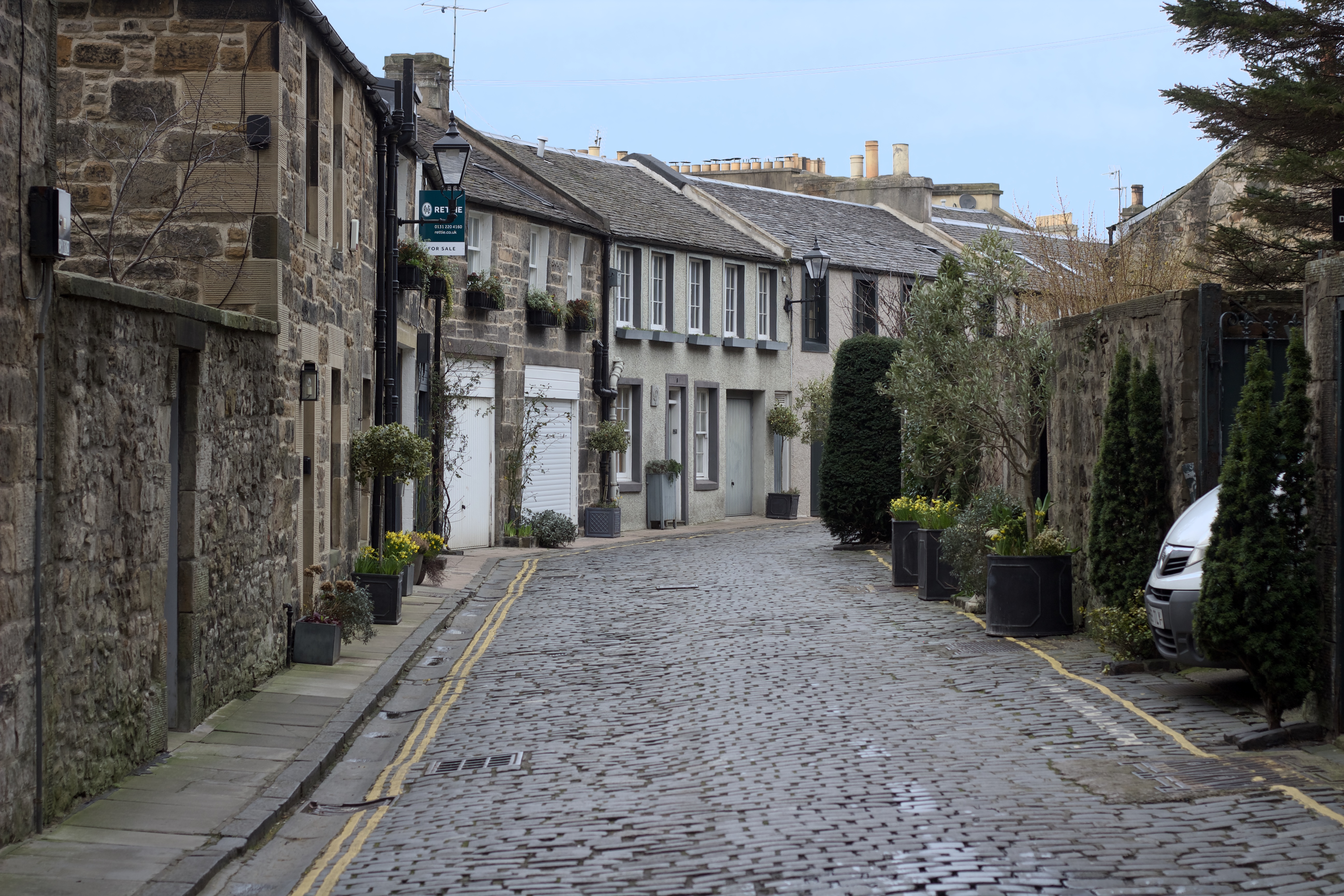
Mike's opinion
Get past the obvious difference in focal length, and our first pairing looks very similar. The iPhone’s computational photography has been hard at work. Instantly, you’re hit by more contrast and saturation. It also displays a much warmer color temperature, but to my eye, this is too warm. The iPhone image is sharper across the frame, too. This is likely a combination of the inherently large depth of field and AI sharpening.
However, when you zoom into the center of the image, where the DSLR is focused, it’s noticeably sharper. The DSLR image also holds up to scrutiny better when zoomed right in, but it’s worth pointing out that the iPhone image is only 12MP here. The DSLR does exhibit chromatic aberration (a simple fix in editing software). This is notably absent in the iPhone photo, which exhibits a very thin white line in its stead, suggesting it’s been removed via AI. Overall, the DSLR is the clear winner when it comes to quality, but you can’t argue with the iPhone’s instant results.
Clock Tower
iPhone - 24mm f.178 (x2, 12MP)
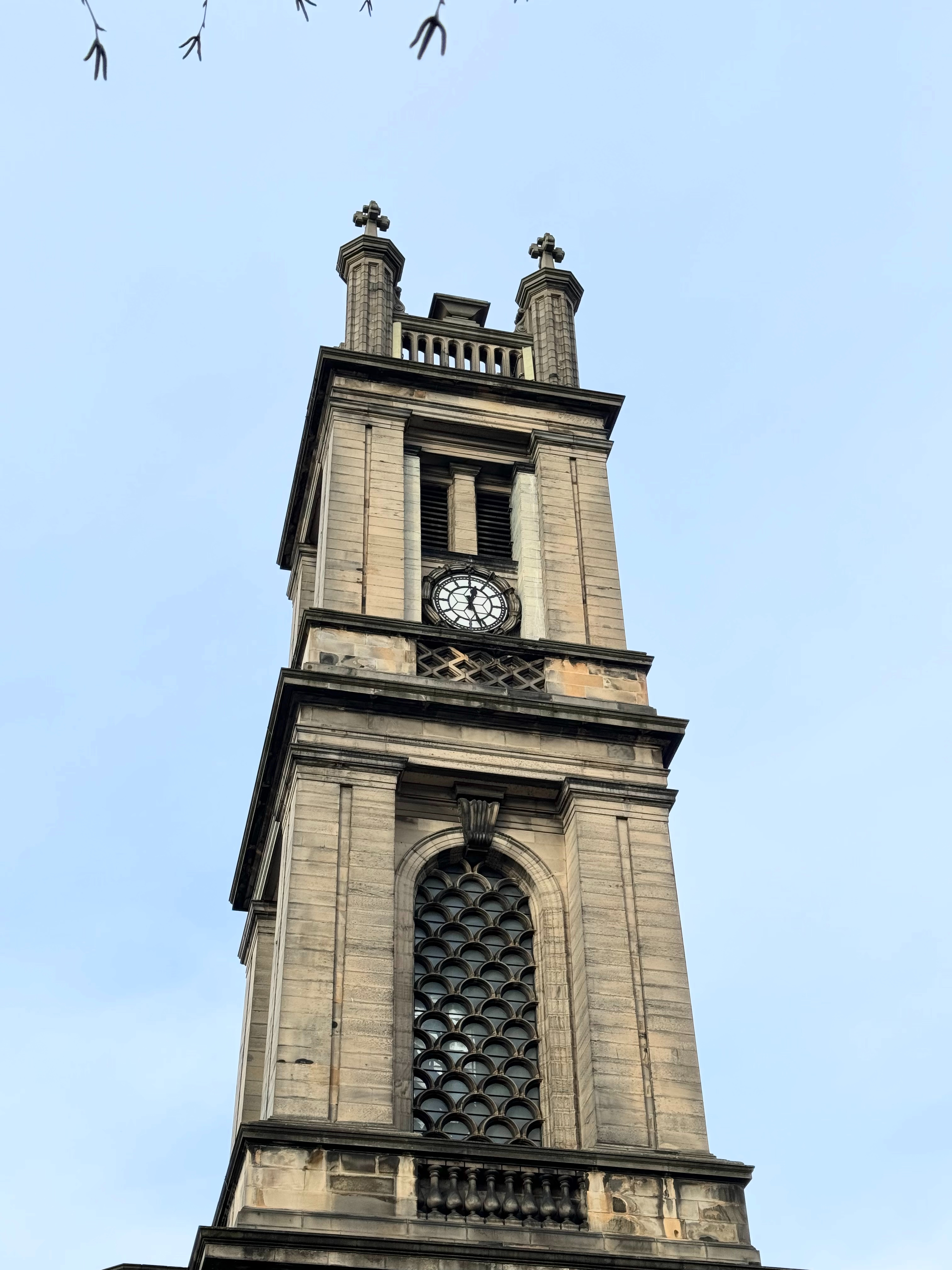
DSLR 18MP RAW

Mike's opinion
The gulf in saturation and contrast in these images isn’t nearly as prominent as the last pairing, and I’m pleased to see that the iPhone has produced a more balanced-looking color temperature this time. What really stands out is the difference between skies. The iPhone has captured much more detail in the sky, while still exposing the clock tower correctly.
I opened the DSLR image in a Raw image editor and tried to reduce the highlights to bring back detail in the sky, but couldn’t. The only way the detail could have been retained would have been to photograph an HDR image, which is what the iPhone has done automatically. Based on these results, I’ve got to give it to the iPhone.
Stockbridge market arch
iPhone - 24mm f.178 (x1, 24MP)
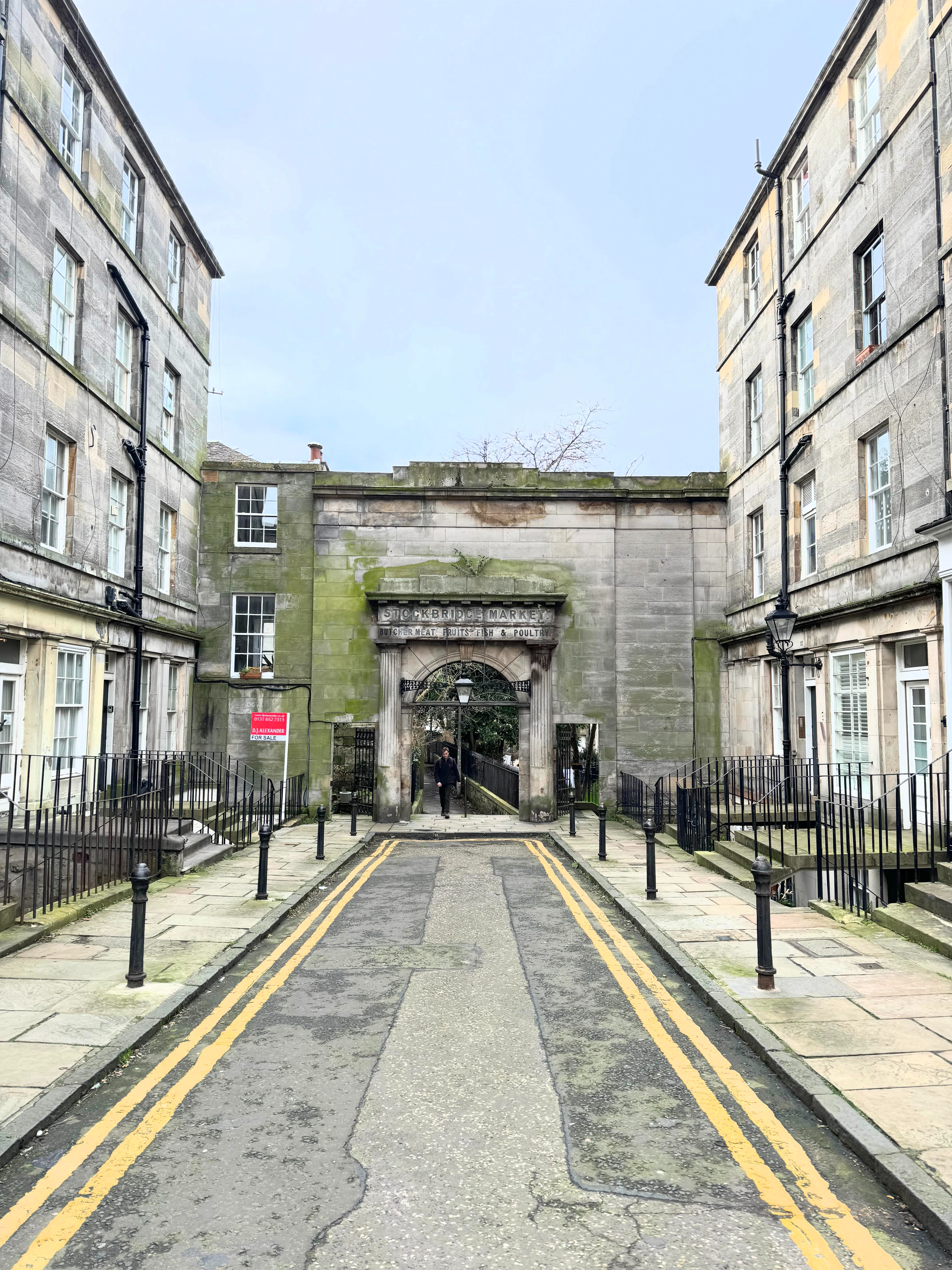
DSLR 18MP RAW

Mike's opinion
The tables have turned in regards to megapixels here, with a 24-MP iPhone image and an 18-MP DSLR image. It’s difficult to judge image quality when the field of view of each image is so different, but zooming right in, I still think I’d give it to the DSLR. Once again, the iPhone has retained more detail in the sky, but that overly warm color temperature is back again. As expected, the iPhone image displays more saturation and contrast, but the DSLR’s Raw file is supposed to look flat. All in all, I consider this one to be a draw.
Flowers
iPhone - 24mm f.178 (x1, 24MP)

DSLR 18MP RAW

Mike's opinion
The framing of these two images is nearly identical, so this is a great chance to analyze image quality. Having zoomed into each image at 800%, my opinion is that the Canon DSLR has captured the better-quality photo. This is a great example of why megapixels aren’t everything and sensor size matters. But it’s worth noting that the iPhone image has been edited (by AI) and the DSLR image hasn’t. Editing can reduce image fidelity, which is why I’d be interested to compare an Apple ProRAW image in the future.
Aside from the unusual boost in contrast and overall sharpness, I’m pleased with the iPhone’s color saturation here. It’s more vivid than the DSLR Raw file, but it isn’t over the top. Many have called out Apple for its overzealous AI editing, but I think the colors look punchy, yet pleasantly natural. Finally, you can see the iPhone’s larger depth of field at work, with the step in the background and the texture of the concrete in the bottom-left corner much more in focus than the DSLR image. The DSLR wins thanks to its superior image quality, but I’m still impressed with the iPhone here.
Geese
iPhone - 24mm f.178 (Portrait Mode, 12MP)
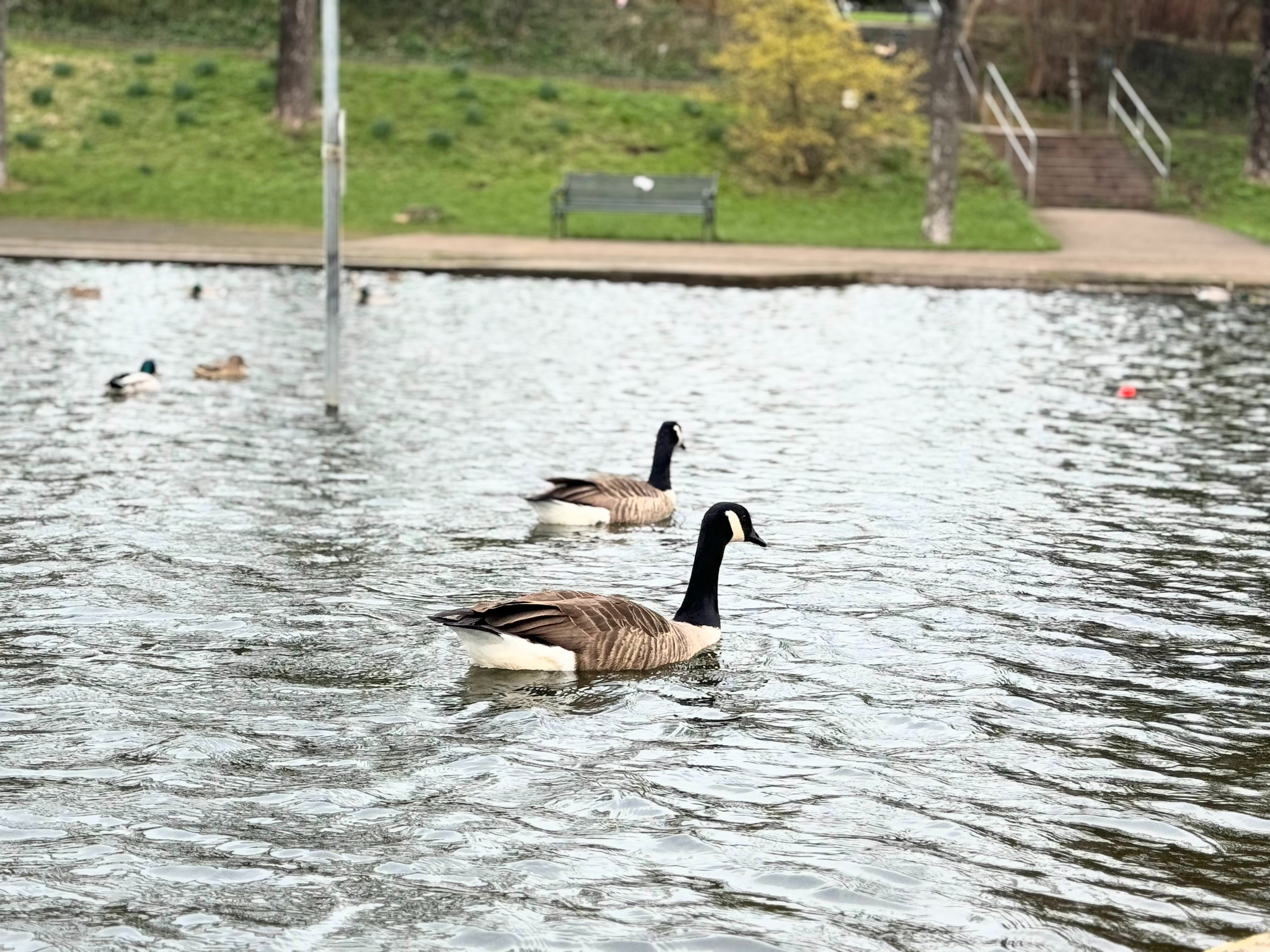
DSLR 18MP RAW
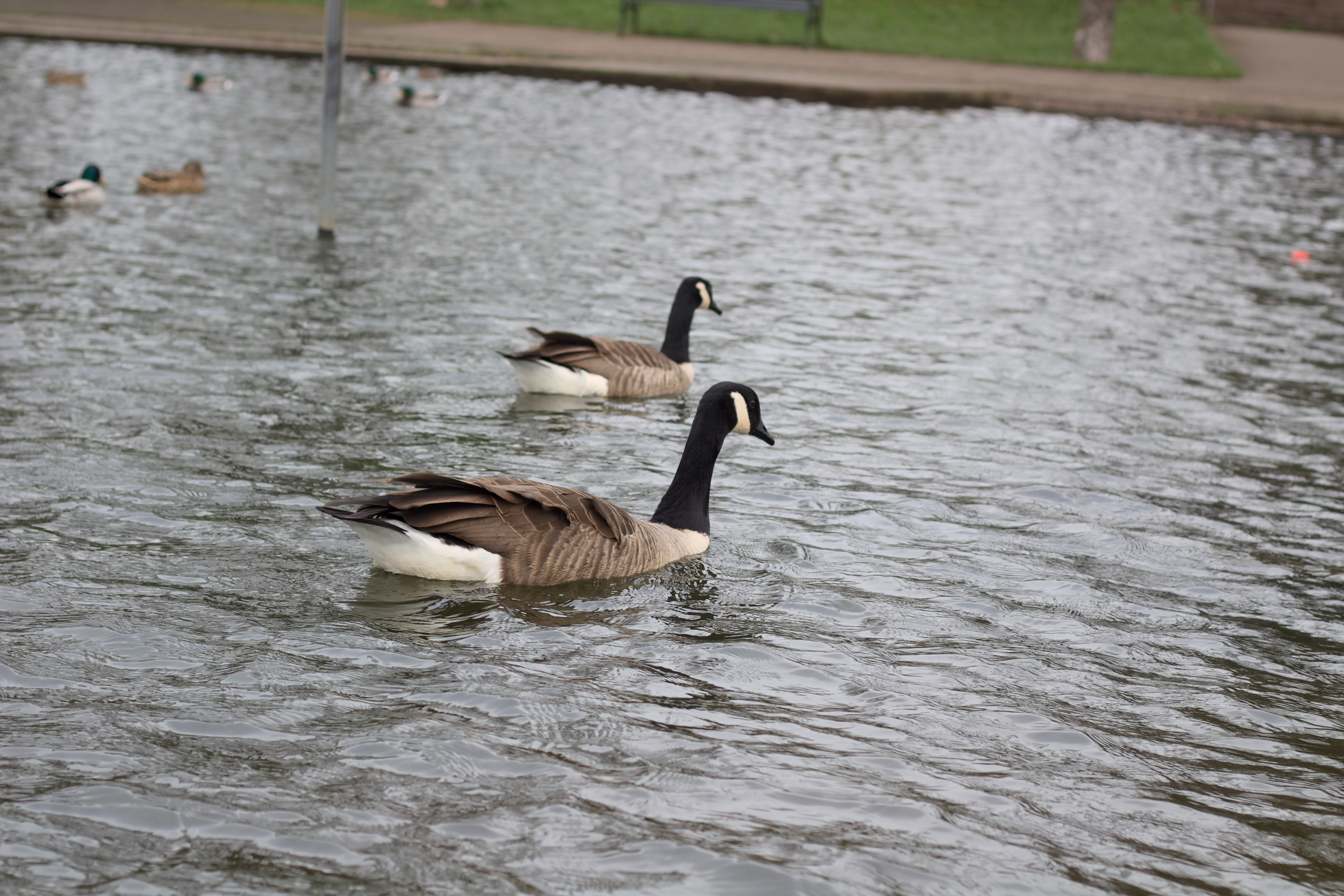
Mike's opinion
Portrait Mode was used for the iPhone image and although both photos look similar, I do think the shallow depth of field in the DSLR photo is more realistic. The drop-off between in-focus and out-of-focus areas is more subtle and natural, whereas the transition from sharp to soft is more sudden in the iPhone photo. That said, I’m impressed with Portrait Mode’s AI-generated blur in this instance. It doesn’t look obviously fabricated.
You may have noticed that the goose in the foreground of the iPhone photo looks sharper than the goose in the DSLR photo. In the latter’s case, this is because the point of focus is mistakenly on the bird’s rear, with the inherently shallower depth of field blurring the bird’s head slightly. The iPhone naturally has a larger depth of field so focusing on subjects is easier, while computational photography sharpens images, making it easier to capture sharper subjects.
What I do find very interesting about this image is that the contrast and saturation is comparable in both images, with the iPhone eking out just a bit more contrast. A DSLR will beat Portrait Mode every time, and because of that the iPhone’s competence has really impressed me here. The DSLR wins, but only just…
Trees
iPhone - 24mm f.178 (x1, 24MP)
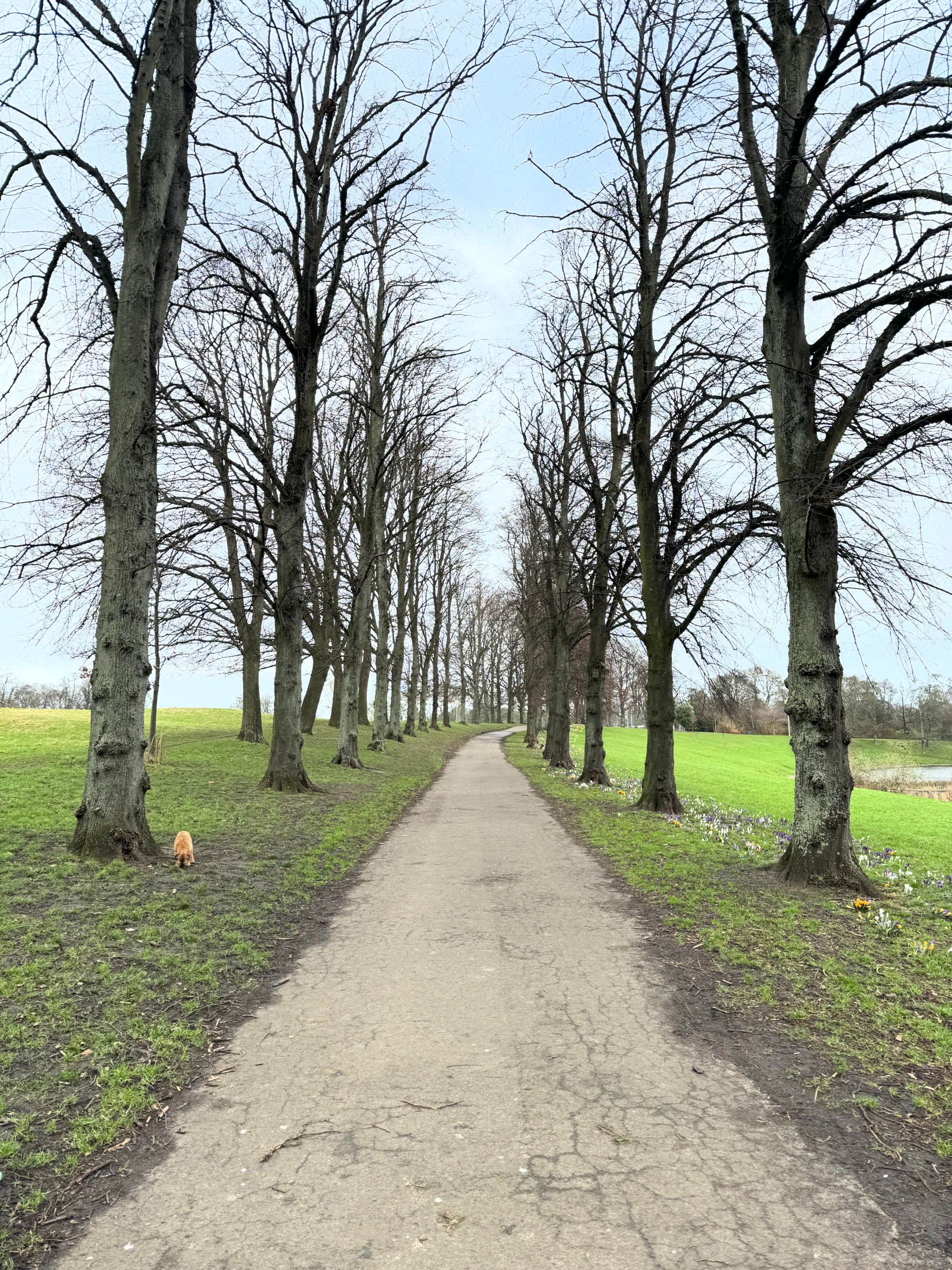
DSLR 18MP RAW

Mike's opinion
These images are another example of how Apple’s computational photography is a huge boon if you’re not interested in image editing and just want decent-looking photos straight from the camera. You’ve got more detail in the sky, more contrast, and punchier colors. Sure, the DSLR image is better quality and with a little TLC in an editing suite, you’ll end up with a comparable or better image. But in a situation like this, when you’re capturing a snapshot, the iPhone will save you a lot of hassle. Another draw.
Characters
iPhone - 24mm f.178 (Portrait Mode, 12MP)
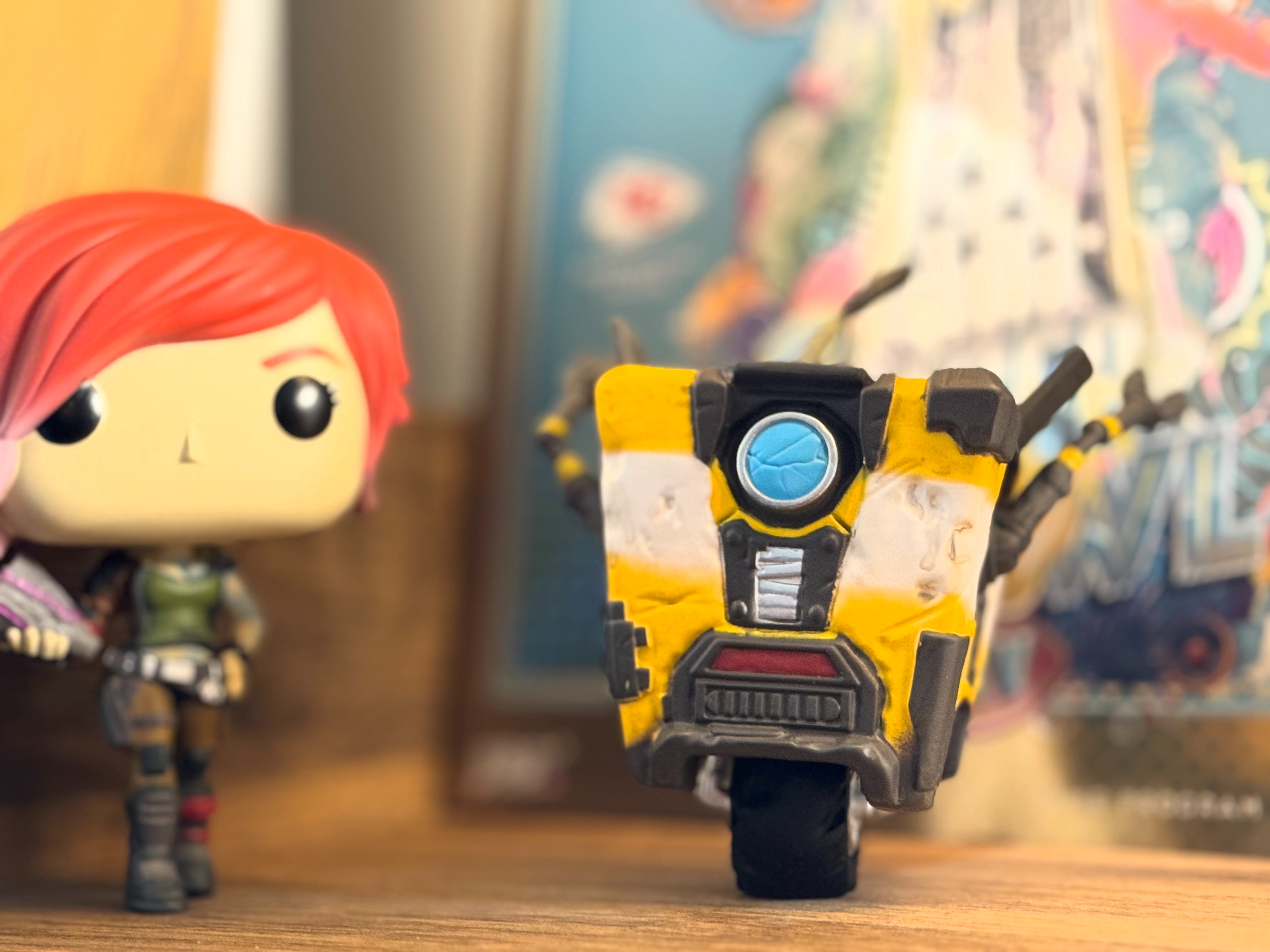
DSLR 18MP RAW

Mike's opinion
The iPhone’s Portrait Mode was used to capture this 12-MP close-up of two figures. Unlike the geese image, earlier, this exposes Portrait Mode’s limitations. At first glance, the images compare well enough, but on closer inspection, things begin to unravel. Notice how in both images the robot’s front is sharp, but on the iPhone photo the left and top edges are noticeably blurry. Blurry edges are a common problem in Portrait Mode, where the sharp subject ends and the artificial blur begins.
Another problem is drop-off. Notice how the figure on the left is sharper in the DSLR photo. This is because it’s positioned only just behind the robot. It’s not close enough to be totally sharp, but it’s not far enough away to be very blurry. In the iPhone photo, it’s considerably more blurry. This is even more apparent at the bottom of the iPhone image. The tabletop is initially sharp – you can see the wood grain – but as it recedes into the background it very suddenly becomes blurry.
The change from being in focus to out of focus should be much more gradual. This iPhone image is the best example of the gulf between Apple’s flagship iPhone and even an aging entry-level DSLR. But this isn’t Apple’s fault. No smartphone has managed to match DSLR cameras when it comes to shallow depths of field. As it stands, the technology simply doesn’t exist.
Expert's verdict
This test has offered up no great surprises. The iPhone 15 Pro Max beat the Canon EOS 1300D (REBEL T6) when it came to visual appeal straight from the camera, and the DSLR beat the iPhone when it came to overall image quality and its ability to capture shallow depths of field. Next, I’d like to compare some big 48-MP Apple ProRAW files to this same DSLR to see how it fares, but to put things into perspective, stack Apple’s flagship iPhone against a pro full-frame (which has an even bigger sensor) 48-MP DSLR or mirrorless camera and it’s goodnight. Or is it?
You see, this comparison has highlighted three things: DSLR and mirrorless cameras aren’t going anywhere anytime soon. It’s downright incredible just how much performance iPhones can squeeze out of their tiny sensors and optics. And for the casual photographer, computational photography makes the hobby more accessible than ever. While the DSLR’s Raw files looked intentionally flat – because they are designed to be edited – almost all of the iPhone images looked Instagram-ready. Yes, DSLR JPEGs would look better than the unedited Raws, but I’m certain they still wouldn’t look as attractive as the AI-edited iPhone images.
It is worth pointing out that this test didn’t really tax the cameras’ low-light capabilities or dynamic range. Again, the DSLR’s physically larger sensor should perform better in both instances, but since iPhones use – you guessed it – computational photography to overcome low-light and high-contrast conditions, I’d be very interested to see how they compare. Autofocus is another factor to consider. I’m pretty certain the iPhone’s ability to automatically focus on faces will trump the REBEL T6’s (although it will pale in comparison to modern mirrorless cameras), but I’d still opt for this old DSLR when photographing fast-moving subjects.
Overall, the iPhone 15 Pro Max hasn’t disappointed, and neither has the Canon EOS 1300D (REBEL T6). If you’re looking to delve deep into the hobby of photography then a DSLR or mirrorless camera is a great step up. But if you’re interested in taking excellent snapshots while engaging in as little image editing as possible, then the iPhone 15 Pro Max might just be the best camera on the market for you.
iPhone vs DSLR: Jargon buster
Sensor size
The iPhone 15 Pro Max’s Main camera system boasts more megapixels than the aging Canon EOS 1300D (REBEL T6), but that doesn’t necessarily mean it produces better-quality images. You see, the DSLR has an APS-C sensor, which is much bigger than the iPhone’s image sensor. To put this into perspective, the Canon DSLR’s sensor measures 22.2 x 14.8mm, while the iPhone’s main sensor is just 9.8 x 7.3mm.
While megapixels affect the resolution and indeed size of an image, larger sensors can allow for increased light gathering, higher resolutions, higher dynamic range, and better low-light capabilities. So, I never expected the iPhone to beat the DSLR outright on image quality.
Depth of field
Depth of field is a way of describing the sharpness of an image beyond the point of focus. We typically explain this by referring to a depth of field as shallow or large. A very shallow depth of field is when a sharp subject is surrounded by lots of blur (think close-up portrait with a blurred background). A very large depth of field is when the entire image looks in focus (think landscape that’s sharp from foreground to background).
Exactly how shallow or large the depth of field is relies on a variety of factors. How far away the background is in relation to the subject, how wide the aperture is set, how long the focal length is and how large the camera’s sensor is. iPhone Camera Modules have fixed apertures and although they are very wide, iPhone sensors are very small, much smaller than DSLR sensors, and the smaller the sensor, the harder it is to create a shallow depth of field. This is why Portrait Mode exists, to get around this technological shortcoming.
RAW files
RAW files are designed to hold as much image data as possible. Unlike HEIC and JPEG files they are virtually unprocessed, making them extremely pliable when edited. Stack an unedited RAW file up against a HEIC or JPEG file and it will look flat, less sharp and it may exhibit optical distortions that haven’t been corrected.
Computational photography
At its most basic, computational photography is a form of automatic image edit. Capture JPEG images on a DSLR and they will look sharper and punchier than RAW files, due to some automatic processing. However, iPhones take this a step further (and then some). Quite how Apple’s magic AI-infused computational magic sauce transforms your photos is anyone’s guess, but it removes optical distortions, improves the quality of low-light images, adds contrast, boosts colors, makes images sharper and much, much more.
Color temperature
The color temperature scale is used to describe the color of light within an image and is measured in kelvins. Roughly around 6,000K is daylight, which is more or less white. Below this the light gets warmer and above this the light gets cooler, that’s to say it takes on an increasingly yellow or blue hue, respectively.
Saturation
This refers to the intensity of the colors within a photograph. Desaturate an image and the colors will become increasingly muted and eventually monochrome. Increase the saturation and colors will become more intense, pushed too far this will eventually result in garish, fabricated-looking results.
Contrast
Contrast is the relationship between light and dark areas within an image. An image with more contrast will display brighter whites and richer blacks. Reduce the contrast and blacks and whites will become increasingly muted.
Dynamic range
This refers to a camera’s ability to capture detail between extremes of very dark shadows and very bright highlights. Typically, a larger image sensor will result in a higher dynamic range. But the latest iPhones cleverly work around their small-sensor shortcomings via computational photography. In short, they can create what’s called a high-dynamic-range (HDR) image by blending together multiple shots of the same image at different exposures, so the very bright and very dark portions of the image can be exposed for separately.
The concept isn’t new. Many DSLRs can create HDR images in-camera, too, and depending on what DSLR you’re using and how proficient you are at imaging editing, you will end up with better results. But where the iPhone wins – as always – is its ease of use. The results are virtually instant and require no specialist knowledge.
Chromatic aberration
When you zoom into an image you may find that the edges of some objects are outlined in vibrant purple, green, red and yellow colors called chromatic aberration or color fringing. Some lenses are more prone to exhibiting this optical anomaly than others, but thankfully, it’s very easy to remove with software.
This feature is part of iPhone Photography Week 2024. Expect new posts to appear daily, focused on making your photos shot with iPhone better than ever before.
Share your photos with iMore on X (Twitter) using #iMorePhotographyWeek







